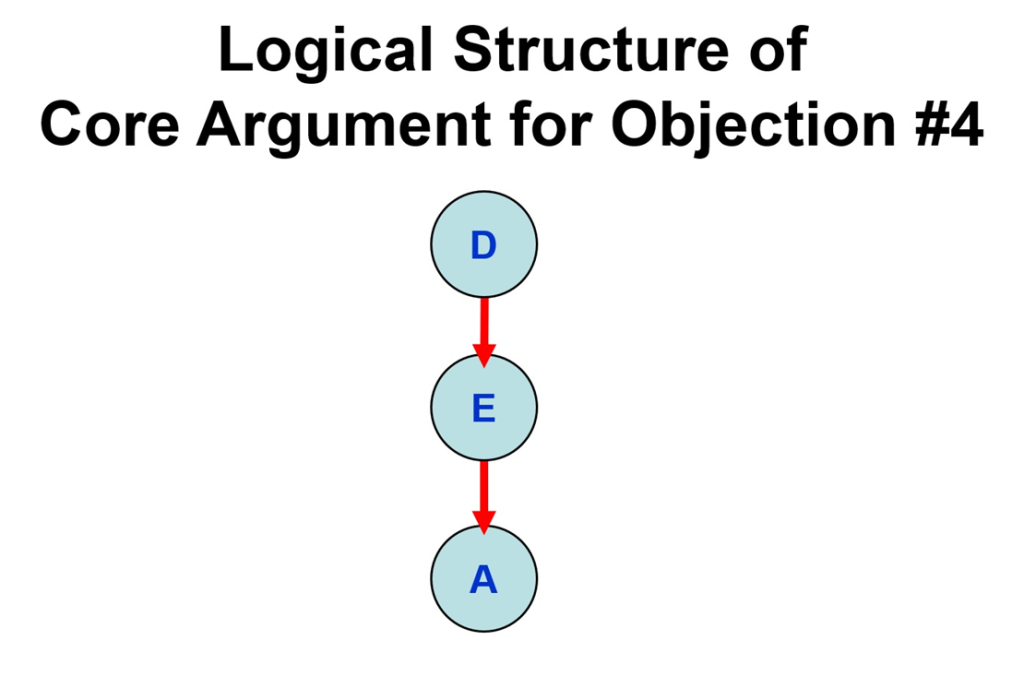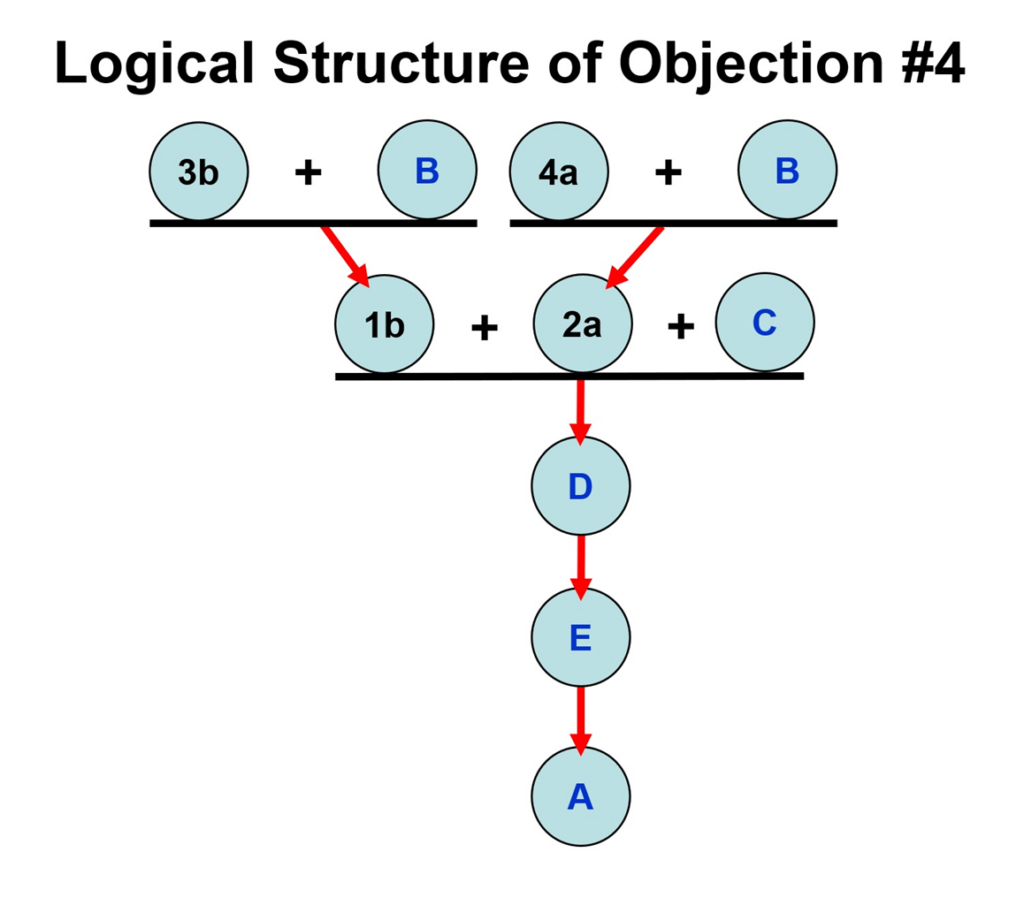Careful Analysis of Objections to the Swoon Theory: Objection #4 (Winding Sheets and Entombment)
WHERE WE ARE
Careful argument evaluation is the heart and soul of critical thinking. But in order to do a careful evaluation of an argument, one must first have a clear understanding of the argument that is to be evaluated. Careful argument analysis is usually required in order to obtain a clear understanding of an argument, so having the knowledge, skills, and desire to do careful argument analysis is crucial to being a critical thinker.
I have carefully evaluated nine objections against the Swoon Theory, objections put forward by Peter Kreeft and Ronald Tacelli in Chapter 8 of their Handbook of Christian Apologetics. I arrived at the conclusion that all nine objections FAIL, and thus that their case against the Swoon Theory FAILS, and their case for the resurrection of Jesus FAILS. But in order to be in a position to do this, I had to first do a careful argument analysis of each objection (each objection constitutes an argument against the Swoon Theory).
In this post I will walk through my process of careful argument analysis, step-by-step, showing how the sausage gets made. The process of careful argument analysis that I use here can be applied to almost any text or speech that contains an argument or arguments. This post will focus on Objection #4 against the Swoon Theory.
ANALYSIS OF OBJECTION #4
Objection #4 is the third of four objections that are based on passages from the Gospel of John:

OBJECTION #4: WINDING SHEETS & ENTOMBMENT
Here is Objection #4 by Kreeft and Tacelli against the Swoon Theory:
The body was totally encased in winding sheets and entombed (Jn 19:38-42).
(HCA, p.183)
IDENTIFICATION STEPS
1. [The body was totally encased in winding sheets]
2. [and entombed]
(Jn 19:38-42). – a reference to a passage from the Gospel of John given as evidence for the previous two historical claims.
3. [According to the Gospel of John (Jn 19:38-42), claim (1) is true.]
4. [According to the Gospel of John (Jn 19:38-42), claim (2) is true.]
CLARIFICATION STEPS
1. [The body was totally encased in winding sheets]
=>1a. On Friday evening, after Jesus’ body was removed from the cross, it was totally encased in winding sheets.
2. [and entombed]
=>2a. On Friday evening, after Jesus’ body was removed from the cross, it was placed into a stone tomb.
3. [According to the Gospel of John (Jn 19:38-42), claim (1) is true.]
=>3a. According to the Gospel of John (Jn 19:38-42), on Friday evening, after Jesus’ body was removed from the cross, it was totally encased in winding sheets.
4. [According to the Gospel of John (Jn 19:38-42), claim (2) is true.]
=>4a. According to the Gospel of John (Jn 19:38-42), on Friday evening, after Jesus’ body was removed from the cross, it was placed into a stone tomb.
FILL IN STEPS
As usual, Kreeft and Tacelli fail to state the conclusion of their argument:
A. The Swoon Theory is false.
The use of a passage from the Gospel of John as evidence for historical claims requires the following unstated premise:
B. The Gospel of John provides a reliable and accurate account of the life of Jesus, including what happened to Jesus’ body after he was crucified.
Because Kreeft and Tacelli state Objection #4 in a single sentence, the core argument as stated clearly FAILS:
1a. On Friday evening, after Jesus’ body was removed from the cross, it was totally encased in winding sheets.
2a. On Friday evening, after Jesus’ body was removed from the cross, it was placed into a stone tomb.
THEREFORE:
A. The Swoon Theory is false.
Not only is this argument NOT a valid deductive argument, the conclusion does NOT follow from the premises even in the weaker sense of providing a good reason to believe the conclusion. There is a huge logical gap between the premises and the conclusion of this argument, so this is a non-sequitur. The inference is a bad inference.
Furthermore, Kreeft and Tacelli don’t even provide us with a hint at how or why these premises could be relevant to the conclusion of their argument. However, Kreeft and Tacelli borrow most of their arguments from other Christian apologists, such as Josh McDowell. So, we could look at how other apologists present this objection, to see if they indicate how to fill the significant logical gap in the argument as presented by Kreeft and Tacelli.
It turns out that McDowell does fill in the logical gap in the argument as presented by Kreeft and Tacelli:
…100-plus pounds of spices and a gummy substance were encased around His body—He must have breathed through it all…He was put into a cold, damp tomb…
Then an incredible thing happened, according to this [Swoon] theory. The cool air of the tomb, instead of killing Him, healed Him….
(The Resurrection Factor, p.98)
McDowell thinks that the Swoon Theory is “incredible” because he thinks that even if Jesus had survived crucifixion, that 100-plus pounds of spices and a gummy substance in the linen wrapping around the body of Jesus would have suffocated Jesus, and that the cold, damp air in the tomb would also have caused the badly wounded Jesus to die quickly.
Here, then, is the unstated assumption that Kreeft and Tacelli were probably making, but failed to state explicitly:
C. IF On Friday evening, after Jesus’ body was removed from the cross, Jesus’ body was totally encased in winding sheets (that included 100-plus pounds of spices and a gummy substance) and Jesus’ body was placed into a stone tomb, THEN even if Jesus had survived his crucifixion Jesus would have either quickly suffocated in his tomb or quickly died in his tomb as a result of the cold damp air in his tomb when Jesus’ body was placed into his tomb on Friday evening.
To make use of this unstated premise, claim (1a) will need to be modified slightly (to include a reference to the spices and gummy substance):
1b. On Friday evening, after Jesus’ body was removed from the cross, it was totally encased in winding sheets (that included 100-plus pounds of spices and a gummy substance).
2a. On Friday evening, after Jesus’ body was removed from the cross, it was placed into a stone tomb.
C. IF On Friday evening, after Jesus’ body was removed from the cross, Jesus’ body was totally encased in winding sheets (that included 100-plus pounds of spices and a gummy substance) and Jesus’ body was placed into a stone tomb, THEN even if Jesus had survived his crucifixion Jesus would have either quickly suffocated in his tomb or quickly died in his tomb as a result of the cold damp air in his tomb when Jesus’ body was placed into his tomb on Friday evening.
THEREFORE:
D. IF Jesus had survived his crucifixion, THEN Jesus would have either quickly suffocated in his tomb or quickly died in his tomb as a result of the cold damp air in his tomb when Jesus’ body was placed into his tomb on Friday evening.
THEREFORE:
E. IF Jesus had survived his crucifixion, THEN Jesus would have quickly died in his tomb.
THEREFORE:
A. The Swoon Theory is false.
ARGUMENT DIAGRAMMING

D. IF Jesus had survived his crucifixion, THEN Jesus would have either quickly suffocated in his tomb or quickly died in his tomb as a result of the cold damp air in his tomb when Jesus’ body was placed into his tomb on Friday evening.
THEREFORE:
E. IF Jesus had survived his crucifixion, THEN Jesus would have quickly died in his tomb.
THEREFORE:
A. The Swoon Theory is false.

1b. On Friday evening, after Jesus’ body was removed from the cross, it was totally encased in winding sheets (that included 100-plus pounds of spices and a gummy substance).
2a. On Friday evening, after Jesus’ body was removed from the cross, it was placed into a stone tomb.
C. IF On Friday evening, after Jesus’ body was removed from the cross, Jesus’ body was totally encased in winding sheets (that included 100-plus pounds of spices and a gummy substance) and Jesus’ body was placed into a stone tomb, THEN even if Jesus had survived his crucifixion Jesus would have either quickly suffocated in his tomb or quickly died in his tomb as a result of the cold damp air in his tomb when Jesus’ body was placed into his tomb on Friday evening.
THEREFORE:
D. IF Jesus had survived his crucifixion, THEN Jesus would have either quickly suffocated in his tomb or quickly died in his tomb as a result of the cold damp air in his tomb when Jesus’ body was placed into his tomb on Friday evening.

3b. According to the Gospel of John (Jn 19:38-42), on Friday evening, after Jesus’ body was removed from the cross, it was totally encased in winding sheets (that included 100-plus pounds of spices and a gummy substance).
B. The Gospel of John provides a reliable and accurate account of the life of Jesus, including what happened to Jesus’ body after he was crucified.
THEREFORE:
1b. On Friday evening, after Jesus’ body was removed from the cross, it was totally encased in winding sheets (that included 100-plus pounds of spices and a gummy substance).
============
4a. According to the Gospel of John (Jn 19:38-42), on Friday evening, after Jesus’ body was removed from the cross, it was placed into a stone tomb.
B. The Gospel of John provides a reliable and accurate account of the life of Jesus, including what happened to Jesus’ body after he was crucified.
THEREFORE:
2a. On Friday evening, after Jesus’ body was removed from the cross, it was placed into a stone tomb.

STATED PREMISES/CLAIMS
1b. On Friday evening, after Jesus’ body was removed from the cross, it was totally encased in winding sheets (that included 100-plus pounds of spices and a gummy substance).
2a. On Friday evening, after Jesus’ body was removed from the cross, it was placed into a stone tomb.
3b. According to the Gospel of John (Jn 19:38-42), on Friday evening, after Jesus’ body was removed from the cross, it was totally encased in winding sheets (that included 100-plus pounds of spices and a gummy substance).
4a. According to the Gospel of John (Jn 19:38-42), on Friday evening, after Jesus’ body was removed from the cross, it was placed into a stone tomb.
UNSTATED PREMISES/CLAIMS
A. The Swoon Theory is false.
B. The Gospel of John provides a reliable and accurate account of the life of Jesus, including what happened to Jesus’ body after he was crucified.
C. IF On Friday evening, after Jesus’ body was removed from the cross, Jesus’ body was totally encased in winding sheets (that included 100-plus pounds of spices and a gummy substance) and Jesus’ body was placed into a stone tomb, THEN even if Jesus had survived his crucifixion Jesus would have either quickly suffocated in his tomb or quickly died in his tomb as a result of the cold damp air in his tomb when Jesus’ body was placed into his tomb on Friday evening.
D. IF Jesus had survived his crucifixion, THEN Jesus would have either quickly suffocated in his tomb or quickly died in his tomb as a result of the cold damp air in his tomb when Jesus’ body was placed into his tomb on Friday evening.
E. IF Jesus had survived his crucifixion, THEN Jesus would have quickly died in his tomb.
EVALUATION OF OBJECTION #4



